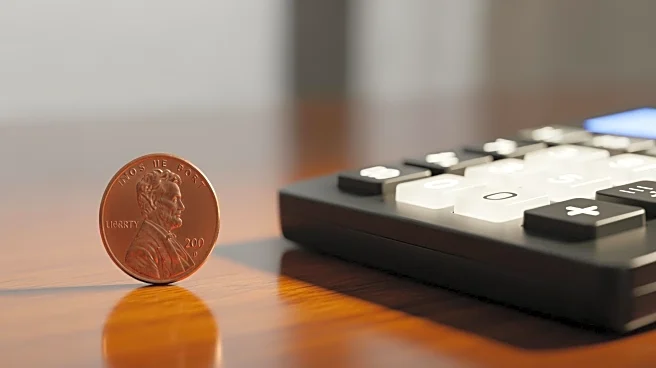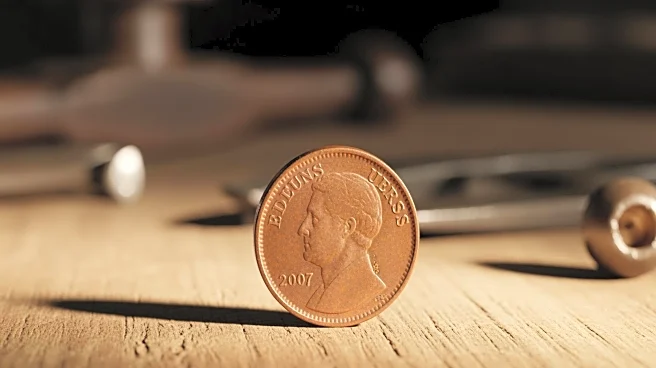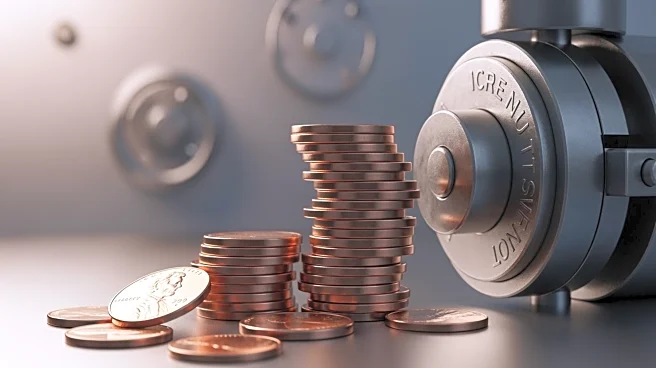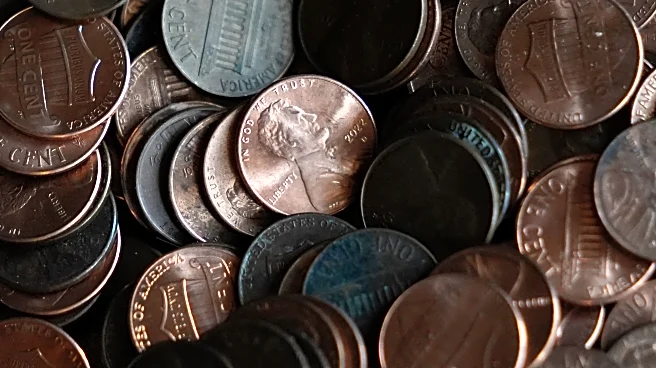What's Happening?
The United States has ceased the production of pennies following an order from President Trump. The decision was made due to the high cost of producing each penny, which is nearly four cents. As a result,
retailers are adjusting their pricing strategies, opting to round transactions to the nearest nickel for cash payments. This move marks a significant shift in the U.S. currency system, as the penny has been a staple of American currency for over a century.
Why It's Important?
The cessation of penny production could have various implications for the U.S. economy and consumers. Retailers will need to adapt their pricing models, which may affect cash transactions and potentially lead to changes in consumer spending habits. Additionally, this decision could influence the minting and circulation of other coins, prompting discussions on the efficiency and cost-effectiveness of U.S. currency production. The move also reflects broader economic considerations, such as reducing government expenditure on currency production.
What's Next?
As pennies become scarce, consumers and businesses will need to adjust to the new pricing norms. The government may explore further changes to coin production, potentially affecting other denominations. Stakeholders, including retailers and financial institutions, will likely monitor the impact on cash transactions and consumer behavior. Discussions on the future of U.S. currency production and potential innovations in digital payment systems may gain traction.













